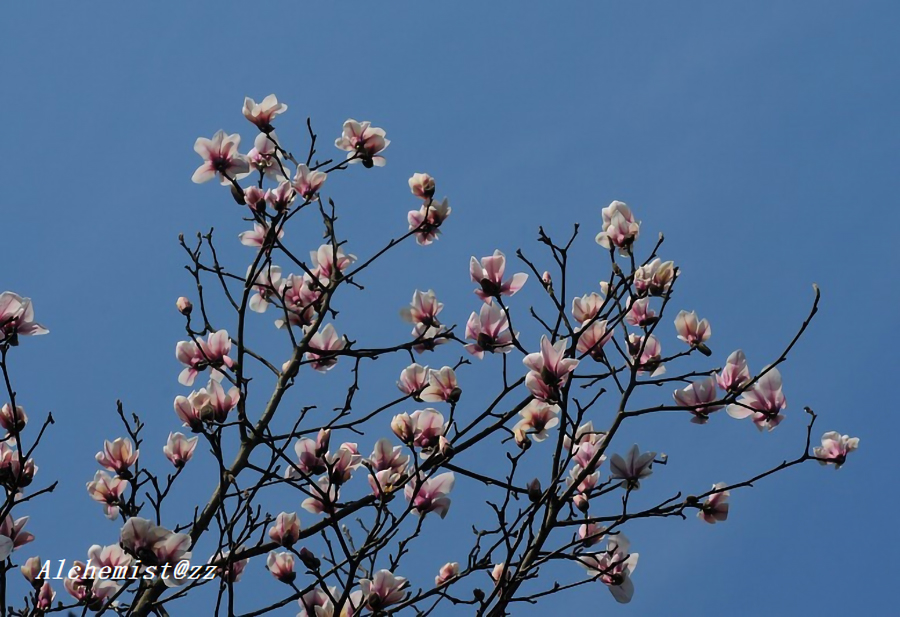- Scientific Name: Magnolia zenii W.C.Cheng
- Ref: Contrib. Biol. Lab. Chin. Assoc. Advancem. Sci., Sect. Bot. 8:291. 1933
- Synonym: Yulania zenii
- English Common Name: Baohua magnolia
- Chinese Common Name: 宝华玉兰 Bǎohuá yùlán
- Family: Magnoliaceae
- Genus: Magnolia
- Distribution: Hills; ca. 200 m. Jiangsu (Baohua Shan, Jurong).
- Photo: 03/09/2013
Trees, to 11 m tall, to 30 cm d.b.h. Bark grayish white, smooth. Old twigs purple, sparsely lenticellate; young twigs green, glabrous; buds narrowly ovoid, apex slightly curved, long sericeous. Stipular scar 1/5-1/2 as long as petiole. Petiole 0.6-1.8 cm, at first villous; leaf blade obovate-oblong to oblong, 7-16 × 3-7 cm, membranous, abaxially pale green, adaxially green and glabrous, midvein and secondary veins with long curved trichomes, secondary veins 8-10 on each side of midvein, base broadly cuneate to obtuse, apex broadly rounded and with an acuminate tip. Peduncle 2-4 mm, with dense long trichomes. Flower buds ovoid. Flowers appearing before leaves, ca. 12 cm in diam., fragrant. Tepals 9, nearly spoon-shaped, 6.8-7.8 × 2.7-3.8 cm, apex rounded to slightly acuminate; inner tepals white but outside pale purplish red from base to middle and apically white, narrower and smaller. Stamens ca. 1.1 cm; filaments purple, ca. 4 mm; connective exserted and forming a mucro; anthers ca. 7 mm, thecae divergent, dehiscing introrsely. Gynoecium cylindric, ca. 2 cm; carpels ca. 4 mm; styles ca. 1 mm. Fruit cylindric, 5-7 cm; mature carpels suborbicular, tuberculate, apex obtuse. Fl. Mar-Apr, fr. Aug-Sep. (Flora of China)
